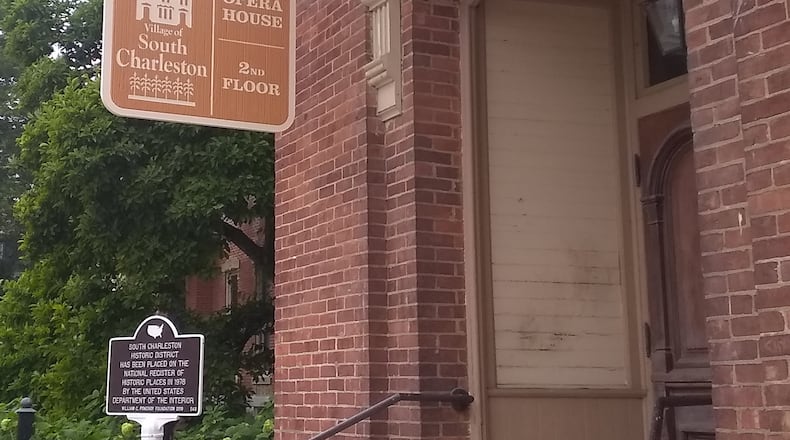The book is being sold for $20 each online through Braughler Books, and will also be sold at the information booth during the South Charleston Heritage Festival next weekend, telling of a somewhat forgotten figure in South Charleston’s history.
“His story had almost been lost in the village, and so I gave a talk in 2018 at the town hall, and for a little town like this, we had about 50 people show up that Sunday afternoon. A lot of them were owners of Edwards’ houses,” she said.
From that point the Heritage Commission, usually supported only by private donations and group activities, needed a different method of income. The Greenlawn Cemetery Historical Walk was then put into a booklet form, and it attracted many as it was a social distancing activity during the pandemic.
“After the presentation, residents kept asking me where I found the information and how I was going to preserve it for the village. The pandemic offered me the opportunity to begin adapting the Edwards PowerPoint presentation to print form. I guess I am one of the rare people that actually wrote a book during the pandemic,” said Mattinson.
From there, more and more homeowners in the village became interested in knowing who built their homes.
“I had a lot of people call me, and for a year, I visited houses. I had invitations to come and visit houses, so I could tell them if they lived in an Edwards house or not, and by the end of that year, I could tell an Edwards house just by looking,” she chuckled.
Edwards not only built in South Charleston, but also built homes and buildings in Springfield, Columbus, and London (Ohio) as well. Mattinson also was able to locate a few homes in Springfield as well that are still standing today.
“He was an amazing carpenter, and the woodwork in this town is phenomenal. So the book I wrote was showing his life through the pictures of what he built, and local records, especially from the Presbyterian church, because we have no record of what he did,” she said.
The founder of the Heritage Commission had said at one point, that Edwards’ signature should be found and given to the commission.
“The end of that story is that, well, I found four of his signatures; three of them were in the Presbyterian church, because he attended there. He was a clerk for a while but that was his church home for half of his life,” Mattinson said.
After Edwards’ death in 1897, his wife and 11 children continued to attend the church, teaching Sunday school, and being an integral part of the community.
“It’s just a marvelous story of a man’s life, and one of the things I’ve said is, how often can you follow a man’s life in the 1800s, an ordinary guy on the street, not a president, or someone notable. How often can you follow the life of a carpenter in the 1800s? So obviously I became acquainted with ancestry, and newspapers.com, and I just ended up with just a marvelous book,” said Mattinson.
Although the book was written for a specific audience, it has seen success as the Edwards-built homes are common in the village.
“It’s a limited market for this book, but you have people who live in the homes he built, and they want to know about where they live now. I’ve talked to people who have in three Edwards homes during their lifetime here,” she said.
Her hope is that this is a start of purposefully preserving the extensive history of the village.
“That’s why the central part of South Charleston is on the national register of historic places, because the whole town was built by one man,” said Mattinson.
To purchase a copy of the book, visit https://store.braughlerbooks.com/books/edward-edwards/.
About the Author

